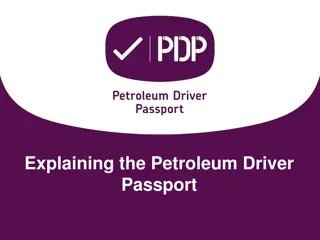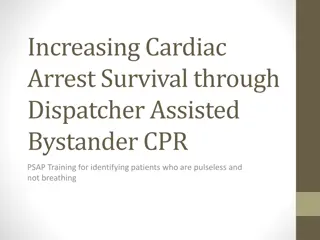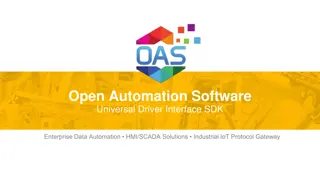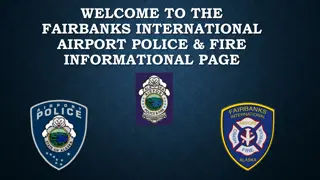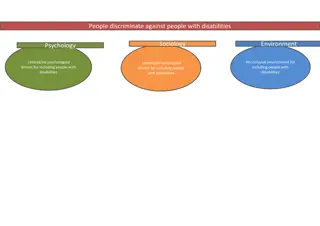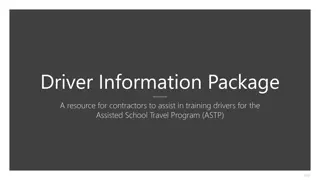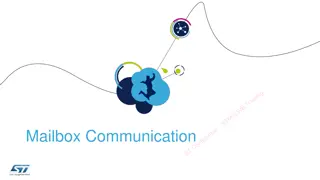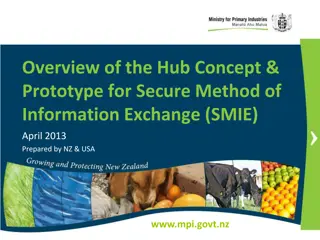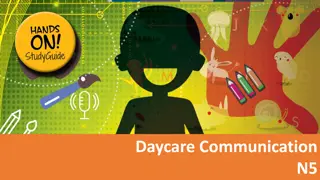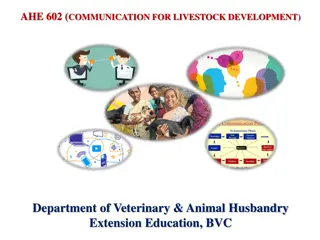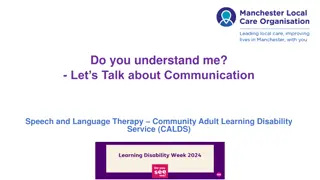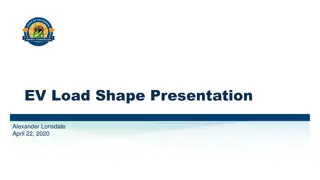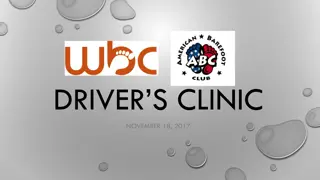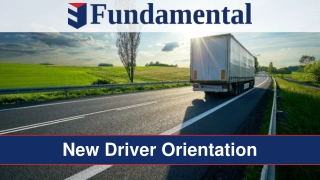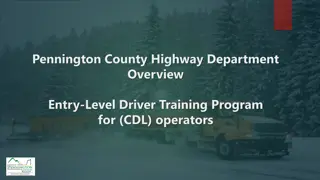
Improving Communication Between Truck Dispatchers and Drivers
In today's fast-paced logistics environment, the use of advanced communicationntechnologies is essential for effective truck dispatch operations. These technologies helpnbridge the gap between dispatchers and drivers, ensuring that information is e
Download Presentation

Please find below an Image/Link to download the presentation.
The content on the website is provided AS IS for your information and personal use only. It may not be sold, licensed, or shared on other websites without obtaining consent from the author. Download presentation by click this link. If you encounter any issues during the download, it is possible that the publisher has removed the file from their server.
E N D
Presentation Transcript
Improving Communication Between Truck Dispatchers and Drivers Effective communication between truck dispatchers and drivers is crucial for the smooth operation of any trucking business. The relationship between dispatchers and drivers can often be strained due to miscommunications or a lack of clear guidelines, leading to inefficiencies and frustration on both sides. With advanced communication technologies, offering targeted training, and establishing clear protocols that service providers like Tech Rig Dispatch employ, companies can significantly enhance the communication process. Advanced Communication Technologies
In today's fast-paced logistics environment, the use of advanced communication technologies is essential for effective truck dispatch operations. These technologies help bridge the gap between dispatchers and drivers, ensuring that information is exchanged accurately and promptly. Real-Time GPS and Telematics Systems GPS Tracking One of the most significant advancements in truck dispatch is the use of real-time GPS tracking systems. These systems allow dispatchers to monitor the exact location of their trucks at all times. They get accurate Estimated Times of Arrival (ETAs) and enable route adjustments based on current traffic conditions. Telematics Telematics systems go a step further by providing detailed data on vehicle performance and driver behavior. For example, telematics can alert dispatchers to maintenance issues or unsafe driving practices, allowing them to offer targeted advice and support. Read More Article: How to Diagnose and Fix Common Washer Problems at Home Mobile Communication Apps Dedicated Apps Mobile communication apps have revolutionized the way dispatchers and drivers communicate. These apps offer integrated platforms for messaging, document sharing, and task management, consolidating all necessary information in one place.
Push Notifications The use of push notifications within these apps is another critical feature. Push notifications ensure that drivers receive urgent messages immediately, without needing to check their phones constantly. This feature is particularly useful for time-sensitive information, such as changes in delivery schedules or urgent safety alerts. Table: Overview of Advanced Communication Technologies Technology Description Benefits GPS Tracking Monitors the location of trucks in real-time, providing ETAs. Reduces constant enhances management. the check-ins, need for and route accurate Telematics Systems Provides performance and driver behavior. data on vehicle Enables and improves maintenance and safety response. targeted advice, Mobile Communication Apps Platforms like Fleet Complete or KeepTruckin for sharing documents, management. Streamlines communication consolidates information. messaging, and and task Push Notifications Urgent immediately to drivers. messages are sent Ensures critical updates are received promptly. In-Cab Devices Systems messaging, logging. like Omnitracs navigation, offer and Integrates multiple tools, and communication efficiency. enhances Training and Development For Better Coordination Even with the best technology in place, the human element of communication cannot be overlooked. Providing dispatchers and drivers with the right training and development opportunities is essential for improving communication.
Workshops and Seminars Regular training sessions focused on communication skills can make a significant difference in the quality of interactions between dispatchers and drivers. Workshops and seminars can cover key areas such as clarity, empathy, and active listening, all of which are essential for effective communication. Establishing Clear Protocols Clear and consistent communication protocols are the backbone of any successful truck dispatch operation. By establishing standard operating procedures (SOPs) and feedback mechanisms, companies can create a structured and predictable communication environment. Standard Operating Procedures (SOPs) Emergency Protocols: One of the most critical aspects of communication in truck dispatch is having clear guidelines for emergencies. Drivers need to know exactly what steps to take and whom to contact in urgent situations. Routine Communication: Establishing regular check-in times between dispatchers and drivers can help maintain a steady flow of information without overwhelming drivers. These routine communications can be used to update drivers on any changes to their routes, schedules, or loads, ensuring that everyone is on the same page. Feedback Mechanisms Surveys and Feedback Forms: Regularly collecting feedback from drivers is essential for identifying communication bottlenecks and areas for improvement. Surveys and feedback forms can provide valuable insights into how drivers perceive the communication process and what changes they believe would be beneficial. Open-Door Policies: Encouraging open communication is another effective way to improve the dispatcher-driver relationship. By fostering an environment where drivers
feel comfortable sharing their concerns and suggestions, companies can address issues before they escalate and create a more collaborative and positive work environment. Read More Article: Finding the Best Washer Repair Services Near You: A Local Guide Benefits of Improved Communication Increased Operational Efficiency: Clear communication helps in better planning and scheduling, reducing delays and optimizing resource allocation. Enhanced Driver Satisfaction: When drivers feel heard and supported, their job satisfaction increases, which can lead to better retention rates. Reduced Miscommunication: Effective communication minimizes errors and misunderstandings, leading to smoother operations and fewer conflicts. Improved Safety: Timely and clear communication can help prevent accidents and ensure that drivers are aware of any hazards or changes in their routes. Wrapping It Up Improving communication between truck dispatchers and drivers is a multifaceted challenge that requires a comprehensive approach. For companies looking to take their truck dispatch communication to the next level, it's essential to start with a thorough assessment of current practices and identify areas for improvement. From there, implementing the strategies outlined in this blog post can lead to significant improvements in communication, ultimately benefiting both dispatchers and drivers alike. Contact Tech Rig Dispatch or visit their website for more info. Site Article: Improving Communication Between Truck Dispatchers and Drivers


